BLOG - Page 23
Recently created mixtures:

Sea-Buckthorn Macerated oil
February 7, 2019

Home made air freshener
June 29, 2016

Homemade Dog-rose distillate
June 28, 2016

Homemade jasmine distillate
June 22, 2016

Moxibustion treatment with Moxa stick
May 30, 2016

Face and body gentle oil cleanser
May 26, 2016
BLOG / LATEST ADDITIONS!
Angelica Essential Oil (Angelica Archangelica) ☸ Essential oils ☸ Base / General
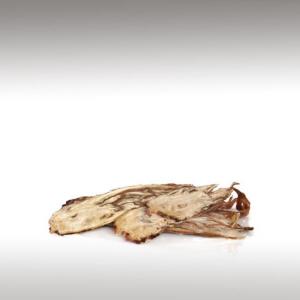

Botanical Name: Angelica archangelica
Common Method of Extraction: Steam distillation
Part Typically Used: Roots, rhizome, seeds and and the herb itself
Color: Pale yallow
Consistency: Thin
Perfumery Note: Top to middle
Strength of Initial Aroma: Sharp, green, herbaceous, with peppery overtones.
Archangelica comes from the Greek word "Arkhangelos" (Arch - angel), due to the myth that it was the archangel Michael who told of its use as medicine.
It is called Angelica, since it normally flowers on the 8th May, which is St Michael the Archangel's Day, and for this reason it is often planted in monasteries and is referred to as "Angel Grass". It is a sweet herbal smelling oil that has a spicy undertone and is also known as European Angelica.
Angelica Archangelica, commonly known as Garden Angelica, Holy Ghost, Wild Celery, and Norwegian Angelica, is a biennial plant from the Apiaceae family, a subspecies of which is cultivated for its sweetly scented edible stems and roots.
Angelica is unique amongst the Umbelliferae for its pervading aromatic odor, a pleasant perfume entirely different from Fennel, Parsley, Anise, Caraway or Chervil. It has been compared it to Musk and to Juniper.
Even the roots are fragrant, and form one of the principal aromatics of European growth - the other parts of the plant have the same flavor, but their active principles are considered more perishable.
Angelica Archangelica grows wild in Finland, Sweden, Norway, Denmark, Greenland, the Faroe Islands, Iceland, mostly in the northern parts of the countries.
It is cultivated in France, mainly in the Marais Poitevin, a marsh region close to Niort. It also grows in certain regions in Germany like the Harz mountains, and in certain regions of Romania, like the Rodna Mountains, and some South East Asian countries like Thailand.
During its first year it only grows leaves, but during its second year its fluted stem can reach a height of two meters. Its leaves are composed of numerous small leaflets, divided into three principal groups, each of which is again subdivided into three lesser groups. The edges of the leaflets are finely toothed or serrated.
The flowers, which blossom in July, are small and numerous, yellowish or greenish in colour, are grouped into large, globular umbels, which bear pale yellow, oblong fruits.
Angelica only grows in damp soil, preferably near rivers or deposits of water.
The plant is said to originate from Africa and was introduced to Europe in the 16th century. From the 10th century on, Angelica was cultivated as a vegetable and medicinal plant and achieved popularity in Scandinavia in the 12th century and is still used today, especially in Sami culture.
Chemical structure:
The essential oilis composed of various chemical constituents such as: a-pinene, camphene, b-pinene, sabinene, a-phellandrene, myrcene, limonene, b-phellandrene, cis-ocimene, trans-ocimene, p-cymene, terpinolene, copaene, bornyl acetate, terpinen-4-ol, cryptone, b-bisabolene, rho-cymen-8-ol, humulene oxide, tridecanolide and pentadecanolide.
Common Method of Extraction: Steam distillation
Part Typically Used: Roots, rhizome, seeds and and the herb itself
Color: Pale yallow
Consistency: Thin
Perfumery Note: Top to middle
Strength of Initial Aroma: Sharp, green, herbaceous, with peppery overtones.
Archangelica comes from the Greek word "Arkhangelos" (Arch - angel), due to the myth that it was the archangel Michael who told of its use as medicine.
It is called Angelica, since it normally flowers on the 8th May, which is St Michael the Archangel's Day, and for this reason it is often planted in monasteries and is referred to as "Angel Grass". It is a sweet herbal smelling oil that has a spicy undertone and is also known as European Angelica.
Angelica Archangelica, commonly known as Garden Angelica, Holy Ghost, Wild Celery, and Norwegian Angelica, is a biennial plant from the Apiaceae family, a subspecies of which is cultivated for its sweetly scented edible stems and roots.
Angelica is unique amongst the Umbelliferae for its pervading aromatic odor, a pleasant perfume entirely different from Fennel, Parsley, Anise, Caraway or Chervil. It has been compared it to Musk and to Juniper.
Even the roots are fragrant, and form one of the principal aromatics of European growth - the other parts of the plant have the same flavor, but their active principles are considered more perishable.
Angelica Archangelica grows wild in Finland, Sweden, Norway, Denmark, Greenland, the Faroe Islands, Iceland, mostly in the northern parts of the countries.
It is cultivated in France, mainly in the Marais Poitevin, a marsh region close to Niort. It also grows in certain regions in Germany like the Harz mountains, and in certain regions of Romania, like the Rodna Mountains, and some South East Asian countries like Thailand.
During its first year it only grows leaves, but during its second year its fluted stem can reach a height of two meters. Its leaves are composed of numerous small leaflets, divided into three principal groups, each of which is again subdivided into three lesser groups. The edges of the leaflets are finely toothed or serrated.
The flowers, which blossom in July, are small and numerous, yellowish or greenish in colour, are grouped into large, globular umbels, which bear pale yellow, oblong fruits.
Angelica only grows in damp soil, preferably near rivers or deposits of water.
The plant is said to originate from Africa and was introduced to Europe in the 16th century. From the 10th century on, Angelica was cultivated as a vegetable and medicinal plant and achieved popularity in Scandinavia in the 12th century and is still used today, especially in Sami culture.
Chemical structure:
The essential oilis composed of various chemical constituents such as: a-pinene, camphene, b-pinene, sabinene, a-phellandrene, myrcene, limonene, b-phellandrene, cis-ocimene, trans-ocimene, p-cymene, terpinolene, copaene, bornyl acetate, terpinen-4-ol, cryptone, b-bisabolene, rho-cymen-8-ol, humulene oxide, tridecanolide and pentadecanolide.
Submitted by OperaDreamhouse (May 29, 2015)
Himalayan Cedarwood Essential Oil (Cedrus Deodara) ☸ Essential oils ☸ Base / General
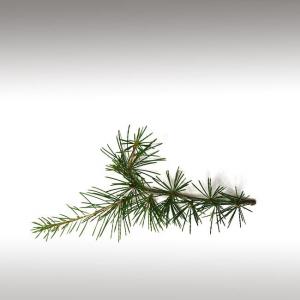

Botanical Name: Cedrus deodora
Common Method of Extraction: Steam distillation
Part Typically Used: Wood
Color: brownish-yellow
Consistency: Slightly viscous liquid
Perfumery Note: Middle / Base
Strength of Initial Aroma: Clean balsamic, woody, rich, herbaceous, pleasant, woody-balsamic undertone.
The botanical name, which is also the English common name, derives from the Sanskrit term Devadāru, which means "Wood of the gods", a compound of Deva "God" and Dāru "Wood, tree". Among Hindus, as the etymologyof Deodar suggests, it is worshiped as a Divine tree.
It is widely grown as an ornamental tree, often planted in parks and large gardens for its drooping foliage. General cultivation is limited to areas with mild winters, with trees frequently killed by temperatures below about −25 °C.
Cedrus Deodara (Deodar Cedar, Himalayan Cedar, or Deodar, Devdar, Devadar, Devadaru) is a species of Cedar native to the western Himalayas in eastern Afghanistan, northern Pakistan, north Republic of India (Jammu, Kashmir, Himachal Pradesh and Uttarakhand states), southwestern Tibet and western Nepal, occurring at 1,500 - 3,200 maltitude.
It is a large evergreen coniferous tree reaching 40 - 50 m tall, exceptionally 60 m with a trunk up to 3 m in diameter. It has a conic crown with level branches and drooping branchlets. Its needle - like leaves are triquetrous, present in whorls and dark green with a silver sheen.
Flowers, open in autumn, are cone - like in shape and occur upright on horizontal branches. Similar to other Cedars, the Heartwood of Himalayan Cedarwood is highly aromatic and yields about 2,1% of essential oil.
Deodar is in great demand as building material because of its durability, rot -r esistant character and fine, close grain, which is capable of taking a high polish. Its historical use to construct religious temples and in landscaping around temples is well recorded. Its rot - resistant character also makes it an ideal wood for constructing the well-known houseboats of Srinagar, Kashmir.
Forests full of Deodar or Devadāru trees were the favorite living place of ancient Indian sages and their families who were devoted to the Hindu god Shiva. To please Lord Shiva, the sages used to perform very difficult tapasya (meditation) practices in Deodar forests. Also the ancient Hindu epics and Shaivite texts regularly mention Darukavana, meaning a Forest of deodars, as a Sacred place.
Cedarwood essential oil is collected from wood chips and sawdust.
The inner wood is aromatic and used to make incense. Inner wood is distilled into essential oil. Produces an oil very similar to the Atlas Cedarwood. Cedar trees date back to the Bible where they symbolised everything fertile and abundant.
Most of the Cedarwood oils are obtained from wild trees but little information is published on the extent to which oil production may have affected the natural resource. In Kenya, as already noted, there has been a serious depletion of the wild trees as a result of over - exploitation for timber and oil. The position in the People's Republic of China is not known. American oil production utilizes waste wood from trees felled for timber as well as the considerable areas where the junipers grow as invasive "weeds".
For those cases where the trees are utilized for both timber and oil production sawdust, wood shavings and other waste wood materials from the saw mills are taken to the distillery for steam distillation and recovery of oil in the normal manner. Sawdust should not be exposed to direct sunlight before distillation, otherwise oil yields and quality are diminished.
In steam distillation process, the plant material is heated with water which produces a steam that contains the volatile oils from the plant. The steam is then cooled, which condenses the oil, and it is separated from the water and collected.
The deodar tree is the national tree of Pakistan.
Chemical structure:
Chemically and biologically this oil can be used as Atlas Cedarwood. It is also a true cedar. Since it is from the Himalayan Mountains and is associated with Tibet, there is a special place for this oil just to have these vibrations in our home.
Common Method of Extraction: Steam distillation
Part Typically Used: Wood
Color: brownish-yellow
Consistency: Slightly viscous liquid
Perfumery Note: Middle / Base
Strength of Initial Aroma: Clean balsamic, woody, rich, herbaceous, pleasant, woody-balsamic undertone.
The botanical name, which is also the English common name, derives from the Sanskrit term Devadāru, which means "Wood of the gods", a compound of Deva "God" and Dāru "Wood, tree". Among Hindus, as the etymologyof Deodar suggests, it is worshiped as a Divine tree.
It is widely grown as an ornamental tree, often planted in parks and large gardens for its drooping foliage. General cultivation is limited to areas with mild winters, with trees frequently killed by temperatures below about −25 °C.
Cedrus Deodara (Deodar Cedar, Himalayan Cedar, or Deodar, Devdar, Devadar, Devadaru) is a species of Cedar native to the western Himalayas in eastern Afghanistan, northern Pakistan, north Republic of India (Jammu, Kashmir, Himachal Pradesh and Uttarakhand states), southwestern Tibet and western Nepal, occurring at 1,500 - 3,200 maltitude.
It is a large evergreen coniferous tree reaching 40 - 50 m tall, exceptionally 60 m with a trunk up to 3 m in diameter. It has a conic crown with level branches and drooping branchlets. Its needle - like leaves are triquetrous, present in whorls and dark green with a silver sheen.
Flowers, open in autumn, are cone - like in shape and occur upright on horizontal branches. Similar to other Cedars, the Heartwood of Himalayan Cedarwood is highly aromatic and yields about 2,1% of essential oil.
Deodar is in great demand as building material because of its durability, rot -r esistant character and fine, close grain, which is capable of taking a high polish. Its historical use to construct religious temples and in landscaping around temples is well recorded. Its rot - resistant character also makes it an ideal wood for constructing the well-known houseboats of Srinagar, Kashmir.
Forests full of Deodar or Devadāru trees were the favorite living place of ancient Indian sages and their families who were devoted to the Hindu god Shiva. To please Lord Shiva, the sages used to perform very difficult tapasya (meditation) practices in Deodar forests. Also the ancient Hindu epics and Shaivite texts regularly mention Darukavana, meaning a Forest of deodars, as a Sacred place.
Cedarwood essential oil is collected from wood chips and sawdust.
The inner wood is aromatic and used to make incense. Inner wood is distilled into essential oil. Produces an oil very similar to the Atlas Cedarwood. Cedar trees date back to the Bible where they symbolised everything fertile and abundant.
Most of the Cedarwood oils are obtained from wild trees but little information is published on the extent to which oil production may have affected the natural resource. In Kenya, as already noted, there has been a serious depletion of the wild trees as a result of over - exploitation for timber and oil. The position in the People's Republic of China is not known. American oil production utilizes waste wood from trees felled for timber as well as the considerable areas where the junipers grow as invasive "weeds".
For those cases where the trees are utilized for both timber and oil production sawdust, wood shavings and other waste wood materials from the saw mills are taken to the distillery for steam distillation and recovery of oil in the normal manner. Sawdust should not be exposed to direct sunlight before distillation, otherwise oil yields and quality are diminished.
In steam distillation process, the plant material is heated with water which produces a steam that contains the volatile oils from the plant. The steam is then cooled, which condenses the oil, and it is separated from the water and collected.
The deodar tree is the national tree of Pakistan.
Chemical structure:
Chemically and biologically this oil can be used as Atlas Cedarwood. It is also a true cedar. Since it is from the Himalayan Mountains and is associated with Tibet, there is a special place for this oil just to have these vibrations in our home.
Submitted by OperaDreamhouse (May 29, 2015)
Cypress Essential Oil (Cupressus Sempervirens) ☸ Essential oils ☸ Base / General
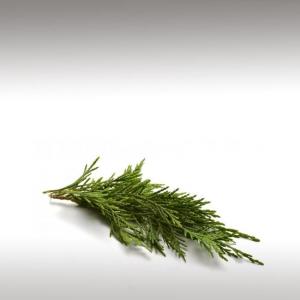

Botanical Name: Cupressus sempervirens
Common Method of Extraction: Steam distillation
Part Typically Used: Needles and twigs
Color: Pale Yellow
Consistency: Thin
Perfumery Note: Top / Middle
Strength of Initial Aroma: Fresh, herbaceous, slightly woody, evergreen aroma.
Cupressus Sempervirens, the Mediterranean Cypress (also known as Italian Cypress,Tuscan Cypress, Graveyard Cypress, or Pencil Pine) is a species of Cypress native to the eastern Mediterranean region, in northeast Libya, southern Albania, southern coastal Croatia, southeast Greece, southern Turkey, Cyprus, northern Egypt, western Syria, Lebanon, Israel, Malta, Italy, western Jordan, and also a disjunct population in Iran.
Cupressus Sempervirens is a medium - sized coniferous evergreen tree to 35 m tall, with a conic crown with level branches and variably loosely hanging branchlets. It is very long - lived, with some trees reported to be over 1,000 years old.
The foliage grows in dense sprays, dark green in colour. The leaves are scale - like, 2-5 mm long, and produced on rounded (not flattened) shoots. The seed cones are oval or oblong, 25-40 mm long, with 10-14 scales, green at first, maturing brown about 20-24 months after pollination.
The essential oil of Cypress is obtained through steam distillation of young twigs, stems and needles. Cypress, a needle bearing tree of Coniferous and Deciduous regions, bears the scientific name of Cupressus Sempervirens.
Has been used for thousands of years as a cleansing incense for several Nepalese and Tibetan cultures. Cypress trees were planted outside of temples and burial grounds by the Greeks and Romans.
Chemical strucutre:
The essential oils extracted from Cypress contain components like alpha pinene, beta pinene, alpha terpinene, bornyl acetate, carene, camphene, cedrol, cadinene, sabinene, myrcene, terpinolene and linalool, which contribute to its medicinal properties.
Common Method of Extraction: Steam distillation
Part Typically Used: Needles and twigs
Color: Pale Yellow
Consistency: Thin
Perfumery Note: Top / Middle
Strength of Initial Aroma: Fresh, herbaceous, slightly woody, evergreen aroma.
Cupressus Sempervirens, the Mediterranean Cypress (also known as Italian Cypress,Tuscan Cypress, Graveyard Cypress, or Pencil Pine) is a species of Cypress native to the eastern Mediterranean region, in northeast Libya, southern Albania, southern coastal Croatia, southeast Greece, southern Turkey, Cyprus, northern Egypt, western Syria, Lebanon, Israel, Malta, Italy, western Jordan, and also a disjunct population in Iran.
Cupressus Sempervirens is a medium - sized coniferous evergreen tree to 35 m tall, with a conic crown with level branches and variably loosely hanging branchlets. It is very long - lived, with some trees reported to be over 1,000 years old.
The foliage grows in dense sprays, dark green in colour. The leaves are scale - like, 2-5 mm long, and produced on rounded (not flattened) shoots. The seed cones are oval or oblong, 25-40 mm long, with 10-14 scales, green at first, maturing brown about 20-24 months after pollination.
The essential oil of Cypress is obtained through steam distillation of young twigs, stems and needles. Cypress, a needle bearing tree of Coniferous and Deciduous regions, bears the scientific name of Cupressus Sempervirens.
Has been used for thousands of years as a cleansing incense for several Nepalese and Tibetan cultures. Cypress trees were planted outside of temples and burial grounds by the Greeks and Romans.
Chemical strucutre:
The essential oils extracted from Cypress contain components like alpha pinene, beta pinene, alpha terpinene, bornyl acetate, carene, camphene, cedrol, cadinene, sabinene, myrcene, terpinolene and linalool, which contribute to its medicinal properties.
Submitted by OperaDreamhouse (May 29, 2015)
Yarrow Bud (Achillea Millefolium) ☸ Plants ☸ Base / General
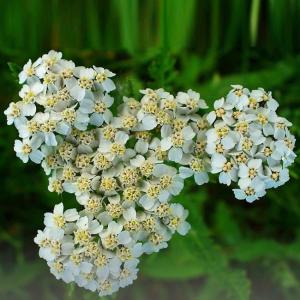

Achillea Millefolium, known commonly as Yarrow or Common Yarrow, is a flowering plant in the family Asteraceae. It is native to temperate regions of the Northern Hemisphere in Asia, Europe, and North America.In New Mexico and southern Colorado, it is called Plumajillo (Spanish 'Little Feather') from its leaf shape and texture.
Other common names for this species include Gordaldo, Nosebleed Plant, Old Man's Pepper, Devil's Nettle, Sanguinary, Milfoil, Soldier's Woundwort, Thousand-Leaf, and Thousand-Seal.
Yarrow grows from sea level to 3,500 metres in elevation. The plant commonly flowers from May through June. Common Yarrow is frequently found in the mildly disturbed soil of grasslands and open forests. Active growth occurs in the spring.
"Achillea" refers to Achilles, an ancient hero. He said that he used Yarrow for himself and for his soldiers. "Millefolium" means "Coming of a Thousand Leaves". This refers to the very small, fine and feathery leaves of this plant.
Achillea Millefolium is an erect herbaceous perennial plant that produces one to several stems 0,2 - 1 metre in height, and has a spreading rhizomatous growth form. Leaves are evenly distributed along the stem, with the leaves near the middle and bottom of the stem being the largest.
The inflorescence has 4 to 9 phyllaries and contains ray and disk flowers which are white to pink. The generally 3 to 8 ray flowers are ovate to round. Disk flowers range from 15 to 40. The inflorescence is produced in a flat - topped cluster. The fruits are small achenes.
It was one of the herbs dedicated to the Evil One, in earlier days, being sometimes known as Devil's Nettle, Devil's Plaything, Bad Man's Plaything, and was used for divination in spells.
Other common names for this species include Gordaldo, Nosebleed Plant, Old Man's Pepper, Devil's Nettle, Sanguinary, Milfoil, Soldier's Woundwort, Thousand-Leaf, and Thousand-Seal.
Yarrow grows from sea level to 3,500 metres in elevation. The plant commonly flowers from May through June. Common Yarrow is frequently found in the mildly disturbed soil of grasslands and open forests. Active growth occurs in the spring.
"Achillea" refers to Achilles, an ancient hero. He said that he used Yarrow for himself and for his soldiers. "Millefolium" means "Coming of a Thousand Leaves". This refers to the very small, fine and feathery leaves of this plant.
Achillea Millefolium is an erect herbaceous perennial plant that produces one to several stems 0,2 - 1 metre in height, and has a spreading rhizomatous growth form. Leaves are evenly distributed along the stem, with the leaves near the middle and bottom of the stem being the largest.
The inflorescence has 4 to 9 phyllaries and contains ray and disk flowers which are white to pink. The generally 3 to 8 ray flowers are ovate to round. Disk flowers range from 15 to 40. The inflorescence is produced in a flat - topped cluster. The fruits are small achenes.
It was one of the herbs dedicated to the Evil One, in earlier days, being sometimes known as Devil's Nettle, Devil's Plaything, Bad Man's Plaything, and was used for divination in spells.
Submitted by OperaDreamhouse (May 28, 2015)
Rose Hips Petal (Rosa Canina) ☸ Plants ☸ Base / General
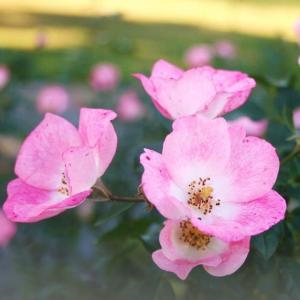

Roses are a group of herbaceous shrubs found in temperate regions throughout both hemispheres. There are over 100 species of Rose. Rosa Canina is used especially for its Rose Hips.
Rosa Canina, commonly known as the Dog-Rose, is a variable climbing Wild Rose species native to Europe, northwest Africa and western Asia.
It also known that it was used in the 18th and 19th centuries to treat the bite of rabid dogs, hence the name "Dog Rose" may result from this (though it seems just as plausible that the name gave rise to the treatment). Other old folk names include Dogberry and Witches Briar.
Historical The word "hips" comes from the Anglo-Saxon word hiope and "Dog Rose" comes from dag meaning "Dagger".
It is a deciduous shrub normally ranging in height from 1 - 5 m, though sometimes it can scramble higher into the crowns of taller trees. Its stems are covered with small, sharp, hooked prickles, which aid it in climbing.
Rosa Canina, commonly known as the Dog-Rose, is a variable climbing Wild Rose species native to Europe, northwest Africa and western Asia.
It also known that it was used in the 18th and 19th centuries to treat the bite of rabid dogs, hence the name "Dog Rose" may result from this (though it seems just as plausible that the name gave rise to the treatment). Other old folk names include Dogberry and Witches Briar.
Historical The word "hips" comes from the Anglo-Saxon word hiope and "Dog Rose" comes from dag meaning "Dagger".
It is a deciduous shrub normally ranging in height from 1 - 5 m, though sometimes it can scramble higher into the crowns of taller trees. Its stems are covered with small, sharp, hooked prickles, which aid it in climbing.
The flowers are usually pale pink, but can vary between a deep pink and white. They are 4 - 6 cm diameter with five petals, and mature into an oval 1,5 - 2 cm red-orange fruit, or hip.
Rosa Canina loves to grow in woodlands, copses, scrub, and hedges up to altitudes of 550 metres. Where offered support, they can climb high into trees. The smaller Hedgehog Rose, will be found growing at altitudes of up to 400 metres.
Rosa Canina loves to grow in woodlands, copses, scrub, and hedges up to altitudes of 550 metres. Where offered support, they can climb high into trees. The smaller Hedgehog Rose, will be found growing at altitudes of up to 400 metres.
All Roses can be grown in sun or light shade, and thrive in well-drained, slightly acid soil.
Simple, yet beautiful blooms are borne singularly or in small clusters on the Dog Rose, from late spring to mid - summer.
Historically, Roses have been important since ancient times, in the preparation and use of foods, medicines, cosmetics, ritual, and perfumery. It is known that the Greeks, Persians, and Romans, employed many kinds of Rose as medicines.
The Dog Rose was the stylized rose of medieval European heraldry, and is still used today. It is also the county flower of Hampshire. Legend states the Thousand - year Rose or Hildesheim Rose, that climbs against a wall of Hildesheim Cathedral dates back to the establishment of the diocese in 815.
Simple, yet beautiful blooms are borne singularly or in small clusters on the Dog Rose, from late spring to mid - summer.
Historically, Roses have been important since ancient times, in the preparation and use of foods, medicines, cosmetics, ritual, and perfumery. It is known that the Greeks, Persians, and Romans, employed many kinds of Rose as medicines.
The Dog Rose was the stylized rose of medieval European heraldry, and is still used today. It is also the county flower of Hampshire. Legend states the Thousand - year Rose or Hildesheim Rose, that climbs against a wall of Hildesheim Cathedral dates back to the establishment of the diocese in 815.
Submitted by OperaDreamhouse (May 28, 2015)
Lemon Eucalyptus Essential Oil (Eucalyptus Citriodora) ☸ Essential oils ☸ Base / General
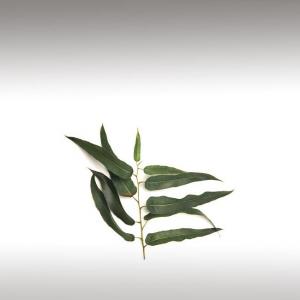

Botanical Name: Eucalyptus citriodora
Common Method of Extraction: Steam distillation
Part Typically Used: Leaves and twigs
Color: Pale Yellow
Consistency: Thin
Perfumery Note: Top / Middle
Strength of Initial Aroma: Fresh, medicinal, heavy lemon aroma.
Corymbia Citriodora is a tall tree, growing to 35 metres in height, from temperate and tropical north eastern Australia. It is also known as Lemon - Scented Gum, Blue Spotted Gum, Lemon Eucalyptus and Eucalyptus Citriodora.
Corymbia Citriodora has smooth, pale, uniform or slightly mottled bark, white to coppery in summer, and a conspicuously narrow - leaved crown which smells strongly of Lemons. The bark is smooth for the entire height of the tree, often powdery, shedding in thin curling flakes.
Eucalyptus Citriodora is one of the most popular Eucalyptus trees grown throughout Melbourne in Australia, which is its native country. This species is believed to have originated from a restricted area of Queensland on the Tropic of Capricorn, and is now found growing throughout the world’s tropical climates.
There are many types of Eucalyptus used to distill oil. Oils high in Eucalyptol are used medicinally, and oils such as the Eucalyptus Lemon are used more in thefragrance industry. More recently it has become a popular addition to natural bug repellents.
Although large quantities of Eucalyptus Citriodora essential oil were distilled in Queensland during the 1950 and 1960, very little of this oil is produced in Australia today. The largest producing countries are now Brazil, China and India, with smaller quantities originating from South Africa, Guatemala, Madagascar, Morocco and Russia.
The essential oil of the Lemon-Scented Gum mainly consists of citronellal(80%), produced largely in Brazil and China.
In Brazil, leaf harvesting may take place twice a year, whereas most of the oil produced in India comes from smallholders who harvest leaves at irregular times, mostly depending on convenience, demand, and oil trading prices.
After collection, the leaves, stems and twigs are sometimes chipped before quickly loading into the still for extraction by steam distillation. Processing takes approximately 1,25 hours and delivers a yield of 1,0% to 1,5% of a colourless to pale straw coloured essential oil.
Chemical strucutre:
The odour is very fresh, Lemon-Citrus and somewhat reminiscent of Citronella oil (Cymbopogon Nardus), due to the fact that both oils contain high levels of the monoterpene aldehyde, citronellal.
Common Method of Extraction: Steam distillation
Part Typically Used: Leaves and twigs
Color: Pale Yellow
Consistency: Thin
Perfumery Note: Top / Middle
Strength of Initial Aroma: Fresh, medicinal, heavy lemon aroma.
Corymbia Citriodora is a tall tree, growing to 35 metres in height, from temperate and tropical north eastern Australia. It is also known as Lemon - Scented Gum, Blue Spotted Gum, Lemon Eucalyptus and Eucalyptus Citriodora.
Corymbia Citriodora has smooth, pale, uniform or slightly mottled bark, white to coppery in summer, and a conspicuously narrow - leaved crown which smells strongly of Lemons. The bark is smooth for the entire height of the tree, often powdery, shedding in thin curling flakes.
Eucalyptus Citriodora is one of the most popular Eucalyptus trees grown throughout Melbourne in Australia, which is its native country. This species is believed to have originated from a restricted area of Queensland on the Tropic of Capricorn, and is now found growing throughout the world’s tropical climates.
There are many types of Eucalyptus used to distill oil. Oils high in Eucalyptol are used medicinally, and oils such as the Eucalyptus Lemon are used more in thefragrance industry. More recently it has become a popular addition to natural bug repellents.
Although large quantities of Eucalyptus Citriodora essential oil were distilled in Queensland during the 1950 and 1960, very little of this oil is produced in Australia today. The largest producing countries are now Brazil, China and India, with smaller quantities originating from South Africa, Guatemala, Madagascar, Morocco and Russia.
The essential oil of the Lemon-Scented Gum mainly consists of citronellal(80%), produced largely in Brazil and China.
In Brazil, leaf harvesting may take place twice a year, whereas most of the oil produced in India comes from smallholders who harvest leaves at irregular times, mostly depending on convenience, demand, and oil trading prices.
After collection, the leaves, stems and twigs are sometimes chipped before quickly loading into the still for extraction by steam distillation. Processing takes approximately 1,25 hours and delivers a yield of 1,0% to 1,5% of a colourless to pale straw coloured essential oil.
Chemical strucutre:
The odour is very fresh, Lemon-Citrus and somewhat reminiscent of Citronella oil (Cymbopogon Nardus), due to the fact that both oils contain high levels of the monoterpene aldehyde, citronellal.
Submitted by OperaDreamhouse (May 20, 2015)
Fennel Essential Oil (Foeniculum Vulgare) ☸ Essential oils ☸ Base / General
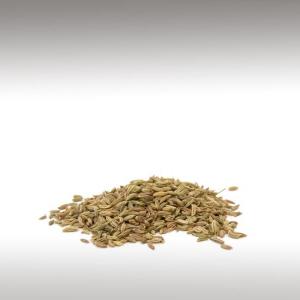

Botanical Name: Foeniculum vulgare
Common Method of Extraction: Steam distilled
Part Typically Used: Seeds
Color: Palle yallow
Consistency: Thin
Perfumery Note: Middle
Strength of Initial Aroma: Sweet, almost peppery, earthy.
Fennel (Foeniculum Vulgare) is a flowering plant species in the celery family Apiaceae or Umbelliferae. It is a hardy, perennial herb with yellow flowers and feathery leaves. It is indigenous to the shores of the Mediterranean but has become widely naturalized in many parts of the world, especially on dry soils near the sea-coast and on riverbanks.
Family is also known as Fenkel and Roman Fennel.
It is a highly aromatic and flavorful herb with culinary and medicinal uses and, along with the similar-tasting anise, is one of the primary ingredients of absinthe.
Fennel, Foeniculum Vulgare, is a perennial herb. It is erect, glaucous green, and grows to heights of up to 2,5 m, with hollow stems. The leaves grow up to 40 cm long. The flowers are produced in terminal compound umbels 5-15 cm wide, each umbel section having 20-50 tiny yellow flowers on short pedicels. The fruit is a dry seed from 4-10 mm long, half as wide or less, and grooved.
The ancient Greeks thought Fennel conveyed long life, courage, and strength. Their name for Fennel was Marathon from Mariano, meaning “To grow thin”. Fennel’s ability to stave off hunger was employed during fasting days in Europe.
Another version: The word "Fennel" developed from the Middle English Fenel or Fenyl. This came from the Old English Fenol or Finol, which in turn came from the Latin Feniculum or Foeniculum, the diminutive of Fenum or Faenum, meaning "Hay".
Fennel oil has a herby, slightly spicy smell, much like Aniseed and it is clear in viscosity.
Chemical structure:
Fennel Aniseed flavour comes from anethole, an aromatic compound also found in Anise and Star Anise, and its taste and aroma are similar to theirs, though usually not as strong.
The main chemical components of Fennel oil are a-pinene, myrcene, fenchone, trans - anethole, methyl chavicol, limonene, 1,8 - cineole and anisic aldehyde.
Fennel seeds are sometimes confused with those of Anise, which are similar in taste and appearance, though smaller.
Fennel is also used as a flavouring in some natural toothpastes.
Common Method of Extraction: Steam distilled
Part Typically Used: Seeds
Color: Palle yallow
Consistency: Thin
Perfumery Note: Middle
Strength of Initial Aroma: Sweet, almost peppery, earthy.
Fennel (Foeniculum Vulgare) is a flowering plant species in the celery family Apiaceae or Umbelliferae. It is a hardy, perennial herb with yellow flowers and feathery leaves. It is indigenous to the shores of the Mediterranean but has become widely naturalized in many parts of the world, especially on dry soils near the sea-coast and on riverbanks.
Family is also known as Fenkel and Roman Fennel.
It is a highly aromatic and flavorful herb with culinary and medicinal uses and, along with the similar-tasting anise, is one of the primary ingredients of absinthe.
Fennel, Foeniculum Vulgare, is a perennial herb. It is erect, glaucous green, and grows to heights of up to 2,5 m, with hollow stems. The leaves grow up to 40 cm long. The flowers are produced in terminal compound umbels 5-15 cm wide, each umbel section having 20-50 tiny yellow flowers on short pedicels. The fruit is a dry seed from 4-10 mm long, half as wide or less, and grooved.
The ancient Greeks thought Fennel conveyed long life, courage, and strength. Their name for Fennel was Marathon from Mariano, meaning “To grow thin”. Fennel’s ability to stave off hunger was employed during fasting days in Europe.
Another version: The word "Fennel" developed from the Middle English Fenel or Fenyl. This came from the Old English Fenol or Finol, which in turn came from the Latin Feniculum or Foeniculum, the diminutive of Fenum or Faenum, meaning "Hay".
Fennel oil has a herby, slightly spicy smell, much like Aniseed and it is clear in viscosity.
Chemical structure:
Fennel Aniseed flavour comes from anethole, an aromatic compound also found in Anise and Star Anise, and its taste and aroma are similar to theirs, though usually not as strong.
The main chemical components of Fennel oil are a-pinene, myrcene, fenchone, trans - anethole, methyl chavicol, limonene, 1,8 - cineole and anisic aldehyde.
Fennel seeds are sometimes confused with those of Anise, which are similar in taste and appearance, though smaller.
Fennel is also used as a flavouring in some natural toothpastes.
Submitted by OperaDreamhouse (May 20, 2015)
Hyacinth Essential Oil (Absolute) (Hyacinthus Orientalis) ☸ Essential oils ☸ Base / General
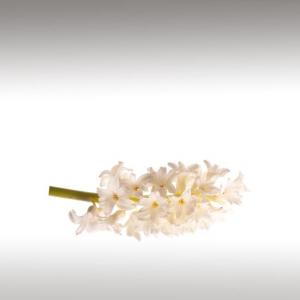
 Botanical Name: Hyacinthus orientalis
Botanical Name: Hyacinthus orientalisCommon Method of Extraction: Solvent extraction
Part Typically Used: Flowers
Color: Pale green to pale amber
Consistency:
Perfumery Note: Top / Middle
Strength of Initial Aroma: sweet, green, floral fragrance with soft floral undertones.
A somewhat green, sweet, floral scent which changes significantly over time and in relation to the individual pH level of the skin.
Hyacinth is a genus of bulbous flowering plants in the family Asparagaceae, subfamily Scilloideae.
Hyacinthus Orientalis (Hyacinth, Garden Hyacinth or Dutch Hyacinth), is a herbaceous perennial flowering plant, native to southwestern Asia, southern and central Turkey, northwestern Syria, Lebanon and northern Israel. This plant is native to eastern Mediterranean, northeast Iran, and Turkmenistan, but it is commonly used as an ornamental plant in almost all parts of the world.
It is a bulbous plant, with a 3 - 7 cm diameter bulb. The leaves are strap - shaped, 15 - 35 cm long and 1- 3 cm broad, with a soft, succulent texture, and produced in a basal whorl. The flowering stem is a spike, which grows to 20 - 35 cm tall, bearing 2 - 50 fragrant purple flowers 2 - 3,5 cm long with a tubular, six - lobed perianth.
Hyacinthus Orientalis has a long history of cultivation as an ornamental plant, grown across the Mediterranean region, and later France (where it is used in perfumery), the Netherlands (a major centre of cultivation) and elsewhere. It flowers in the early spring, growing best in full sun to part shade in well - drained, but not dry, soil. It requires a winter dormancy period, and will only persist in cold-weather regions.
What is fascinating about the Hyacinth is that each of the many colors in which it appears in nature has its own fragrance. When Hyacinth just starts blooming, it produces a light floral aroma, but when the flower stem opens up the scent becomes very strong and powerful.
The essential oilis extremely precious. It requires 6000kg of flowers to yield one single litre of the essential oil. It is mostly used in high class perfumery.
Hyacinth absolute oil is solvent extracted with ethanolfrom the flowers.
It is important to note that all absolutes are extremely concentrated by nature. They should not be evaluated in this state unless you are accustomed to the undiluted fragrance. Recommend that they be evaluated in dilution. Otherwise, the complexity of the fragrance - particularly the rare and exotic notes - become lost. Always dilute Hyacinth absolute oil to 5% or less in a carrier oil before applying to the skin.
It was introduced to Europe in the 16th century.
The name of the Hyacinth is derived from Greek language where it means “Flower of rain”. It is also mentioned as the “Sorrow flower” and “In memory of Hyacinthus” (who is a divine hero from Greek mythology), symbolizing dying and the resurrecting beauty of Nature.
A tragic love story tells the fate of Hyacinthus, a beautiful youth, beloved of Phoebus. One day, the two were out playing with the discus. Phoebus threw it far and high and hit the mark. Young Hyacinth ran to pick it up - alas, too eagerly, for Zephyrus, the mischievous Wind of the West, who also fancied Hyacinthus, had been roused with jealousy, and now he blew the discus from the sand. It hit poor Hyacinthus in the face and the youth fell to the ground. Blood flowed from his head his life lights were quickly fading.
Phoebus was heartbroken, but the wound was beyond repair, even by the might of his healing powers. And so, to immortalize the boy's memory he turned him into flower, which immediately sprang from the ground where his blood had fallen. Every year since then the Spartans celebrate an annual festival to keep the memory of Hyacinthus alive.
The Hyacinth was also one of the flowers that witnessed the rape of Persephone.
Submitted by OperaDreamhouse (May 20, 2015)
Everlasting Essential Oil (Helichrysum Italicum) ☸ Essential oils ☸ Base / General
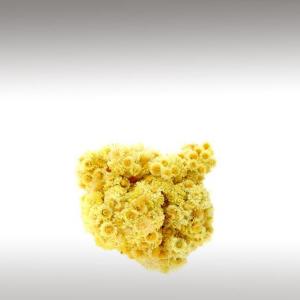

Botanical Name: Helichrysum italicum
Common Method of Extraction: Steam distilled
Part Typically Used: Fresh flowering tops
Color: Yellow - reddish
Consistency: Thin
Perfumery Note: Middle / Base
Strength of Initial Aroma: Herbal smell, strongly straw-like, fruity smell, with a honey and tea undertone.
The genus Helichrysum consists of an estimated 600 species, in the Sunflower family (Asteraceae). The type species is Helichrysum Orientale. The name is derived from the Greek words Helisso "To turn around" and Chrysos "Gold". It is commonly known as Everlasting oil, Immortelle and St. John's herb (not to be confused with St. John's Wort which is known as Hypericum Perforatum).
The plants may be annuals, Herbaceous Perennials or shrubs, growing to a height of 60 - 90 cm. Their leaves are oblong to lanceolate. They are flat and pubescent on both sides. The bristles of the pappus are scabrous, barbellate, or plumose. The receptacle (base of the flower head) is often smooth, with a fringed margin, or honey - combed, and resemble daisies.
When cut young and dried, the open flowers and stalks preserve their colour and shape for long periods.
Helichrysum Italicum is an European herb native to France, Italy and a few neighboring countries. This is a very costly oil and scarcely available, but unlike other essential oils which have a short shelf life, this oil can be stored for a very long time (5 - 7 years).
Helichrysum Italicum (synonym Helichrysum Angustifolium) is steam distilledto produce a yellow-reddish essential oilpopular in fragrance for its unique scent, best described as a mixture of burnt sugar and ham. Angustifolium means narrow leaved. The name is commonly misspelled as "Augustifolium".
Chemical structure:
The main chemical components of helichrysum oil are a-pinene, camphene, b - pinene, myrcene, limonene, 1,8 - cineole, linalool, terpinen - 4 - ol, neryl acetate, nerol, geraniol, eugenol, italidone and other b - diketones.
The essential oil yield for Helichrysum is quite low at approximately: 0,2 - 0,3%. This would be a contributing factor to its cost. The average price at the time of writing for 5mls is $32 - 40. US.
Common Method of Extraction: Steam distilled
Part Typically Used: Fresh flowering tops
Color: Yellow - reddish
Consistency: Thin
Perfumery Note: Middle / Base
Strength of Initial Aroma: Herbal smell, strongly straw-like, fruity smell, with a honey and tea undertone.
The genus Helichrysum consists of an estimated 600 species, in the Sunflower family (Asteraceae). The type species is Helichrysum Orientale. The name is derived from the Greek words Helisso "To turn around" and Chrysos "Gold". It is commonly known as Everlasting oil, Immortelle and St. John's herb (not to be confused with St. John's Wort which is known as Hypericum Perforatum).
The plants may be annuals, Herbaceous Perennials or shrubs, growing to a height of 60 - 90 cm. Their leaves are oblong to lanceolate. They are flat and pubescent on both sides. The bristles of the pappus are scabrous, barbellate, or plumose. The receptacle (base of the flower head) is often smooth, with a fringed margin, or honey - combed, and resemble daisies.
When cut young and dried, the open flowers and stalks preserve their colour and shape for long periods.
Helichrysum Italicum is an European herb native to France, Italy and a few neighboring countries. This is a very costly oil and scarcely available, but unlike other essential oils which have a short shelf life, this oil can be stored for a very long time (5 - 7 years).
Helichrysum Italicum (synonym Helichrysum Angustifolium) is steam distilledto produce a yellow-reddish essential oilpopular in fragrance for its unique scent, best described as a mixture of burnt sugar and ham. Angustifolium means narrow leaved. The name is commonly misspelled as "Augustifolium".
Chemical structure:
The main chemical components of helichrysum oil are a-pinene, camphene, b - pinene, myrcene, limonene, 1,8 - cineole, linalool, terpinen - 4 - ol, neryl acetate, nerol, geraniol, eugenol, italidone and other b - diketones.
The essential oil yield for Helichrysum is quite low at approximately: 0,2 - 0,3%. This would be a contributing factor to its cost. The average price at the time of writing for 5mls is $32 - 40. US.
Submitted by OperaDreamhouse (May 20, 2015)
Kelp Powder (Ascophyllum Nodosum) ☸ Ingredients ☸ Base / General
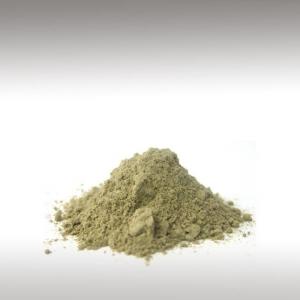

Kelps are large seaweeds belonging to the Brown Algae (Phaeophyceae) in the order Laminariales. Kelp grows in underwater "Forests" (kelp forests) in shallow oceans, and is thought to have appeared in the Miocene, 23 to 5 million years ago. The organisms require nutrient-rich water with temperatures between 6 and 14 °C. They are known for their high growth rate - the genera Macrocystis and Nereocystis can grow as fast as half a metre a day, ultimately reaching 30 to 80 metres.
Kelp, also known as Brown Algae, is an herb that comes from deep under the sea. It is, essentially, Seaweed that thrives on sunlight and takes in the host of nutrients and minerals present in the water around it.
Growth occurs at the base of the meristem, where the blades and stipe meet. Growth may be limited by grazing. The kelp life cycle involves a diploid sporophyte and haploid gametophyte stage. The haploid phase begins when the mature organism releases many spores, which then germinate to become maleor female gametophytes. Sexual reproduction then results in the beginning of the diploid sporophyte stage, which will develop into a mature individual.
Some of the earliest evidence for human use of marine resources, coming from Middle Stone Age sites in South Africa, includes the harvesting of foods such as abalones, limpets, and mussels associated with Kelp forest habitats.
Kelp, also known as Brown Algae, is an herb that comes from deep under the sea. It is, essentially, Seaweed that thrives on sunlight and takes in the host of nutrients and minerals present in the water around it.
Growth occurs at the base of the meristem, where the blades and stipe meet. Growth may be limited by grazing. The kelp life cycle involves a diploid sporophyte and haploid gametophyte stage. The haploid phase begins when the mature organism releases many spores, which then germinate to become maleor female gametophytes. Sexual reproduction then results in the beginning of the diploid sporophyte stage, which will develop into a mature individual.
Some of the earliest evidence for human use of marine resources, coming from Middle Stone Age sites in South Africa, includes the harvesting of foods such as abalones, limpets, and mussels associated with Kelp forest habitats.
Submitted by OperaDreamhouse (May 19, 2015)
Rose Petals ☸ Ingredients ☸ Medicine / Health
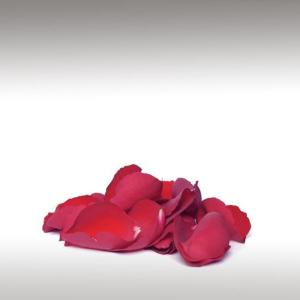

Rose Petals are high in nutrients and especially high in polyphenols, an important antioxidant.
You can use wild or domesticated Rses. First, you want to be sure that they haven't been sprayed with harmful chemicals.
You can use wild or domesticated Rses. First, you want to be sure that they haven't been sprayed with harmful chemicals.
Secondly, your best bet is to use Roses that are aromatic. Roses that have no smell may not be as good for medicine or food, so use your nose to find the best Roses.
Submitted by OperaDreamhouse (May 19, 2015)
German Chamomile Flower (Matricaria Recutita) ☸ Plants ☸ Base / General
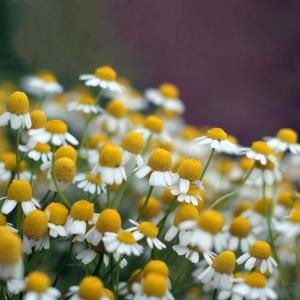

Matricaria Chamomilla (Matricaria Recutita), commonly known as Chamomile (also spelled Camomile), German Chamomile, Hungarian Chamomile (Kamilla), Wild Chamomile or scented Mayweed,is an annual plant of the composite family Asteraceae. Matricaria Chamomilla is the most popular source of the herbal product Chamomile, although other species are also used as Chamomile.
The word Chamomile comes from the Greek "Chamaimēlon" meaning "Earth-Apple", which is derived from "Chamai" meaning "On the Ground" and "Mēlon" meaning "Apple". It is so called because of the apple - like scent of the plant.
Matricaria Chamomilla has a branched, erect and smooth stem, which grows to a height of 15 - 60 cm. The long and narrow leaves are pinnate and tripinnate. The flowers are borne in paniculata flower heads (Capitulo). The white ray florets are furnished with a ligule, while the disc florets are yellow. The hollow receptacle is swollen and lacks scales. The flowers bloom in early to midsummer, and have a strong, aromatic smell. it will live more than two years.
Matricaria Chamomilla can be found near populated areas all over Europe and temperate Asia, and it has been widely introduced in temperate North America and Australia. It often grows near roads, around landfills, and in cultivated fields as a weed, because the seeds require open soil to survive. German Chamomile will tolerate many soils, but prefers a sandy, well-drained soil with a pH of 7,0 - 7,5 and full sun.
The word Chamomile comes from the Greek "Chamaimēlon" meaning "Earth-Apple", which is derived from "Chamai" meaning "On the Ground" and "Mēlon" meaning "Apple". It is so called because of the apple - like scent of the plant.
Matricaria Chamomilla has a branched, erect and smooth stem, which grows to a height of 15 - 60 cm. The long and narrow leaves are pinnate and tripinnate. The flowers are borne in paniculata flower heads (Capitulo). The white ray florets are furnished with a ligule, while the disc florets are yellow. The hollow receptacle is swollen and lacks scales. The flowers bloom in early to midsummer, and have a strong, aromatic smell. it will live more than two years.
Matricaria Chamomilla can be found near populated areas all over Europe and temperate Asia, and it has been widely introduced in temperate North America and Australia. It often grows near roads, around landfills, and in cultivated fields as a weed, because the seeds require open soil to survive. German Chamomile will tolerate many soils, but prefers a sandy, well-drained soil with a pH of 7,0 - 7,5 and full sun.
Submitted by OperaDreamhouse (May 15, 2015)
Bitter Orange Blossom (Citrus Aurantium) ☸ Plants ☸ Base / General
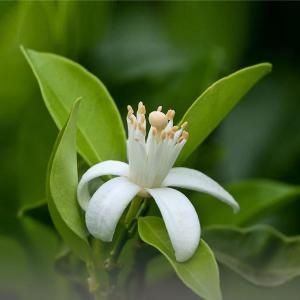

The sour orange is native to southeastern Asia. Natives of the South Sea Islands, especially Fiji, Samoa, and Guam, believe the tree to have been brought to their shores in prehistoric times. Arabs are thought to have carried it to Arabia in the 9th Century. It was reported to be growing in Sicily in 1002 A.D., and it was cultivated around Seville, Spain, at the end of the 12th Century.
For 500 years, it was the only orange in Europe and it was the first orange to reach the New World.
Citrus Aurantium is an evergreen tree growing to 9 m by 6 m. It is in leaf 12 - Janua. It is in flower from April to June. The flowers arehermaphrodite (have bothmale and femaleorgans) and are pollinated by apomictic, insects.The plant is self-fertile.
The tree ranges in height from less than 3 m to 9 m, is more erect and has a more compact crown than the Sweet Orange, has smooth, brown bark, green twigs, angular when young, and flexible, not very sharp, thorns from 2,5 - 8 cm long.
The highly fragrant flowers, borne singly or in small clusters in the leaf axils, are about 3,75 cm wide, with 5 white, slender, straplike, recurved, widely-separated petals surrounding a tuft of up to 24 yellow stamens. From 5 to 12% of the flowers are male.
Its scent is sweet, honeyed and somewhat metallic with green and spicey facets.
Orange Blossom can be described as smelling sweeter, warmer and more floral than Neroli. The difference between how Neroli and Orange Blossom smell and why they are referred to with different names, is a result of the process of extraction that is used to obtain the oil from the blooms. Neroli is extracted by steam distillation and Orange Blossom is extracted via a process of enfleurage.
By the end of the 17th century, Anne Marie Orsini, duchess of Bracciano and princess of Nerola, Italy, introduced the essence of Bitter Orange tree as a fashionable fragrance by using it to perfume her gloves and her bath. Since then, the term "Neroli" has been used to describe this essence. Neroli has a refreshing and distinctive, spicy aroma with sweet and flowery notes.
The largest Bigarade - tree plantations are to be found in the South of France, in Calabria and in Sicily. The centre of the industry of Neroli oil is the South of France, where the Bitter Orange is extensively cultivated for that purpose alone.
The tree requires a dry soil with a southern aspect. It bears flowers three years after grafting, increasing every year until it reaches its maximum, when it is about twenty years old. The quantity depends on the age and situation, a full - grown tree yielding on an average 50 to 60 lb. of blossoms.One hundred Orange trees, at the age of ten years, will occupy nearly an acre of land, and will produce during the season about 2,200 lb. of Orange Flowers.
The flowering season is in May and the flowersare gathered two or three times a week, after sunrise. When the autumn is mild and atmospheric conditions are favourable, flowering takes place in October, and this supplementary harvest lasts until January, or till a frosty morning stops the flowering. These autumn flowers have much less perfume than those of the spring and the custom is to value them at only one-half the price of May flowers.
The flowers yield nectar for Honeybees.
Orange Petals are often associated with marriage, purity and brides, as brides traditionally wore Orange Buds in their hair.
Orange Flowers have been used in wedding traditions since the times of ancient China. In Chinese tradition, Orange Flowers were omens of purity, innocence and moral virtue, but also a symbol of fruitfulness and fertility. Brides of all nations have always worn some kind of a floral embellishment on their wedding day, and the tradition of using orange flowers has spread from the East to Europe, during the times of the Crusaders.
Maidens have used fresh Orange Blossoms to decorate their hair on a wedding day, and this custom was so widespread that that the expression "To Gather Orange Blossoms" took completely different connotation by starting to mean "To Seek a Wife".
The fruitof the Bitter Orange (Citrus Aurantium) is very similar to the Sweet Orange (Citrus Sinensis), but is smaller, with a diameter of only seven to eight centimetres. The sphere is slightly flattened and the skin is thicker and more dimpled than that of the Sweet Orange. The fruit flesh tastes sour, while the peel and the skin surrounding the fruit segments have a strong bitter taste. Around the Mediterranean the ripe Bitter Oranges are harvested in January and February.
For 500 years, it was the only orange in Europe and it was the first orange to reach the New World.
Citrus Aurantium is an evergreen tree growing to 9 m by 6 m. It is in leaf 12 - Janua. It is in flower from April to June. The flowers arehermaphrodite (have bothmale and femaleorgans) and are pollinated by apomictic, insects.The plant is self-fertile.
The tree ranges in height from less than 3 m to 9 m, is more erect and has a more compact crown than the Sweet Orange, has smooth, brown bark, green twigs, angular when young, and flexible, not very sharp, thorns from 2,5 - 8 cm long.
The highly fragrant flowers, borne singly or in small clusters in the leaf axils, are about 3,75 cm wide, with 5 white, slender, straplike, recurved, widely-separated petals surrounding a tuft of up to 24 yellow stamens. From 5 to 12% of the flowers are male.
Its scent is sweet, honeyed and somewhat metallic with green and spicey facets.
Orange Blossom can be described as smelling sweeter, warmer and more floral than Neroli. The difference between how Neroli and Orange Blossom smell and why they are referred to with different names, is a result of the process of extraction that is used to obtain the oil from the blooms. Neroli is extracted by steam distillation and Orange Blossom is extracted via a process of enfleurage.
By the end of the 17th century, Anne Marie Orsini, duchess of Bracciano and princess of Nerola, Italy, introduced the essence of Bitter Orange tree as a fashionable fragrance by using it to perfume her gloves and her bath. Since then, the term "Neroli" has been used to describe this essence. Neroli has a refreshing and distinctive, spicy aroma with sweet and flowery notes.
The largest Bigarade - tree plantations are to be found in the South of France, in Calabria and in Sicily. The centre of the industry of Neroli oil is the South of France, where the Bitter Orange is extensively cultivated for that purpose alone.
The tree requires a dry soil with a southern aspect. It bears flowers three years after grafting, increasing every year until it reaches its maximum, when it is about twenty years old. The quantity depends on the age and situation, a full - grown tree yielding on an average 50 to 60 lb. of blossoms.One hundred Orange trees, at the age of ten years, will occupy nearly an acre of land, and will produce during the season about 2,200 lb. of Orange Flowers.
The flowering season is in May and the flowersare gathered two or three times a week, after sunrise. When the autumn is mild and atmospheric conditions are favourable, flowering takes place in October, and this supplementary harvest lasts until January, or till a frosty morning stops the flowering. These autumn flowers have much less perfume than those of the spring and the custom is to value them at only one-half the price of May flowers.
The flowers yield nectar for Honeybees.
Orange Petals are often associated with marriage, purity and brides, as brides traditionally wore Orange Buds in their hair.
Orange Flowers have been used in wedding traditions since the times of ancient China. In Chinese tradition, Orange Flowers were omens of purity, innocence and moral virtue, but also a symbol of fruitfulness and fertility. Brides of all nations have always worn some kind of a floral embellishment on their wedding day, and the tradition of using orange flowers has spread from the East to Europe, during the times of the Crusaders.
Maidens have used fresh Orange Blossoms to decorate their hair on a wedding day, and this custom was so widespread that that the expression "To Gather Orange Blossoms" took completely different connotation by starting to mean "To Seek a Wife".
The fruitof the Bitter Orange (Citrus Aurantium) is very similar to the Sweet Orange (Citrus Sinensis), but is smaller, with a diameter of only seven to eight centimetres. The sphere is slightly flattened and the skin is thicker and more dimpled than that of the Sweet Orange. The fruit flesh tastes sour, while the peel and the skin surrounding the fruit segments have a strong bitter taste. Around the Mediterranean the ripe Bitter Oranges are harvested in January and February.
Submitted by OperaDreamhouse (May 15, 2015)
Royal Jasmine Blossoms (Jasminum Grandiflorum) ☸ Plants ☸ Base / General
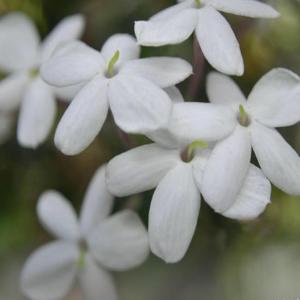

It is widely cultivated as an ornamental plant in warm temperate and subtropical regions. The term Jasmine is probably derived from Persian word Yasmine meaning "Fragrance", which is adopted in Arabic as Yasym given to Jasmine Flowers.
Jasminum Grandiflorum, also known variously as the Spanish Jasmine, Royal Jasmine, Catalonian Jasmine, is a species of Jasmine native to South Asia (Nepal, Kashmir, and Northern Pakistan), the Arabian Peninsula (Oman, Saudi Arabia), Northeast Africa (Eritrea, Ethiopia, Djibouti, Somalia, Sudan), the African Great Lakes (Kenya, Uganda, Rwanda), and the Yunnan and Sichuan regions of China.
The plant is known as "Saman Pichcha" or "Pichcha" in Sri Lanka. Buddhist and Hindu temples use these flowers in abundance.
It is a scrambling deciduous shrub growing to 2 - 4 m tall. The leaves are opposite, 5 - 12 cm long, pinnate with 5 - 11 leaflets. The flowers are produced in open cymes, the individual flowers are white having corolla with a basal tube 13 - 25 mm long and five lobes 13 - 22 mm long. The flower's fragrance is unique and sweet. The flowers open at night, and close in the morning.
The bulk of the flowers are used as such in garlands and decorative branches for religious offerings, and a small quantity is used for production of oils and attars.
Jasminum Grandiflorum, also known variously as the Spanish Jasmine, Royal Jasmine, Catalonian Jasmine, is a species of Jasmine native to South Asia (Nepal, Kashmir, and Northern Pakistan), the Arabian Peninsula (Oman, Saudi Arabia), Northeast Africa (Eritrea, Ethiopia, Djibouti, Somalia, Sudan), the African Great Lakes (Kenya, Uganda, Rwanda), and the Yunnan and Sichuan regions of China.
The plant is known as "Saman Pichcha" or "Pichcha" in Sri Lanka. Buddhist and Hindu temples use these flowers in abundance.
It is a scrambling deciduous shrub growing to 2 - 4 m tall. The leaves are opposite, 5 - 12 cm long, pinnate with 5 - 11 leaflets. The flowers are produced in open cymes, the individual flowers are white having corolla with a basal tube 13 - 25 mm long and five lobes 13 - 22 mm long. The flower's fragrance is unique and sweet. The flowers open at night, and close in the morning.
The bulk of the flowers are used as such in garlands and decorative branches for religious offerings, and a small quantity is used for production of oils and attars.
Submitted by OperaDreamhouse (May 15, 2015)
Damask Rose Flower (Rosa Damascena) ☸ Plants ☸ Base / General
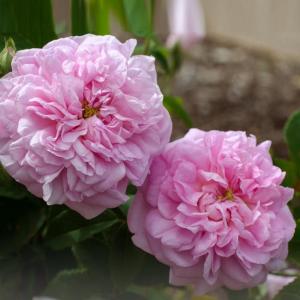

Rose is the king of flowers and Damask Rose is classified in Old Garden Roses. The origion of Damask Rose is Iran and the Middle East region and it is the national flower of Iran.
There are evidences that Rosaceae family is an ancient plant. Some fossils of rose are found in America that are 30 million years old.
The origin of Damask Rose is the Middle East and some evidences indicate that the origin of Rose wather is Iran, but the origin of its fragrant oil and extracts is Greece. This plant is cultivated in alll over the world including Iran, Europe, Bulgaria, Turkey and India.
Rosa Damascena, more commonly known as the Damask Rose, or sometimes as the Rose of Castile, is a Rose Hybrid, derived from Rosa Gallica and Rosa Moschata. Further DNA analysis has shown that a third species, Rosa Fedtschenkoana, is associated with the Damask Rose.
The flowers are renowned for their fine fragrance, and are commercially harvested for Rose oil, Rose otto, Rose absolute used in perfumery and to make rose water and "Rose concrete". The flower petals are also edible.
The Damask Rose is a deciduous shrub growing to 2,2 m tall, the stems densely armed with stout, curved prickles and stiff bristles. The leaves are pinnate, with five leaflets. The Roses are a light to moderate pink to light red. The relatively small flowers grow in groups. The bush has an informal shape.
Rosa Damascena is best cultivated in hedge rows to help protect the blooms from wind and to facilitate ease of picking. Gathering the flowersis quite labor - intensive as it must be done by hand. There are about twenty to forty days per year when harvesting occurs, depending on the type of Rosa Damascena cultivation in the region.
The Crusader Robert de Brie is often given credit for bringing this rose from Persia to Europe sometime between 1254 and 1276. The name refers to Damascus, Syria, a major city in the region. Other stories say the Romans brought the Rose to England, and a third account says that Henry VIII's physician gave him a Damask Rose as a present, around 1540.
For centuries, the Damascus Rose (Rosa Damascena) has been considered a symbol of beauty and love. The fragrance of the Rose has been captured and preserved in the form of Rose Water by an ancient method that can be traced back to biblical times in the Middle East, and later to the Indian subcontinent. An Iranian doctor, Avicenna, is credited with the discovery of the process for extracting Rose Water from Rose Petals in the early 11 century.
There are evidences that Rosaceae family is an ancient plant. Some fossils of rose are found in America that are 30 million years old.
The origin of Damask Rose is the Middle East and some evidences indicate that the origin of Rose wather is Iran, but the origin of its fragrant oil and extracts is Greece. This plant is cultivated in alll over the world including Iran, Europe, Bulgaria, Turkey and India.
Rosa Damascena, more commonly known as the Damask Rose, or sometimes as the Rose of Castile, is a Rose Hybrid, derived from Rosa Gallica and Rosa Moschata. Further DNA analysis has shown that a third species, Rosa Fedtschenkoana, is associated with the Damask Rose.
The flowers are renowned for their fine fragrance, and are commercially harvested for Rose oil, Rose otto, Rose absolute used in perfumery and to make rose water and "Rose concrete". The flower petals are also edible.
The Damask Rose is a deciduous shrub growing to 2,2 m tall, the stems densely armed with stout, curved prickles and stiff bristles. The leaves are pinnate, with five leaflets. The Roses are a light to moderate pink to light red. The relatively small flowers grow in groups. The bush has an informal shape.
Rosa Damascena is best cultivated in hedge rows to help protect the blooms from wind and to facilitate ease of picking. Gathering the flowersis quite labor - intensive as it must be done by hand. There are about twenty to forty days per year when harvesting occurs, depending on the type of Rosa Damascena cultivation in the region.
The Crusader Robert de Brie is often given credit for bringing this rose from Persia to Europe sometime between 1254 and 1276. The name refers to Damascus, Syria, a major city in the region. Other stories say the Romans brought the Rose to England, and a third account says that Henry VIII's physician gave him a Damask Rose as a present, around 1540.
For centuries, the Damascus Rose (Rosa Damascena) has been considered a symbol of beauty and love. The fragrance of the Rose has been captured and preserved in the form of Rose Water by an ancient method that can be traced back to biblical times in the Middle East, and later to the Indian subcontinent. An Iranian doctor, Avicenna, is credited with the discovery of the process for extracting Rose Water from Rose Petals in the early 11 century.
Submitted by OperaDreamhouse (May 15, 2015)
Page 23 of 48

